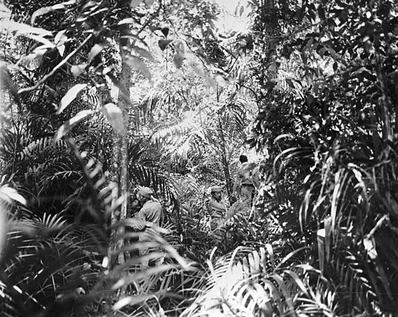|
Not many folks left who remember April 9th as The Fall of Bataan, the day American forces surrendered to an enemy in battle. A surrender that demanded unimaginable courage from the men who survived the death march and hell ships that followed. American nurses escaped Bataan as the Japanese closed in. I couldn't share all the nurses' stories in my book Pure Grit. Here's one I had to leave out--from Army Nurse Bertha Dworsky.  Underground Hospital in Malinta Tunnel, Corregidor before WWII, U.S. Army Signal Corps Underground Hospital in Malinta Tunnel, Corregidor before WWII, U.S. Army Signal Corps "Well, by that time, there were no boats there to meet us. But while we were waiting the Japanese bombers came over to bomb early in the morning. So we quickly dashed into the ditches, tried to protect ourselves. Eventually, the bombing cleared and some boat came over and we piled onto it and we were on our way to Corregidor. It was, I think, a three mile water crossing between Corregidor and Marivales. As we were trying to land at Corregidor, the bombers came again. I recall so plainly that the bombs fell all around us and as they hit the water, it was just like a huge geyser coming up. Spouts all over from the bombs. But they didn't hit us. Eventually, the Japanese bombers left we went ashore and into The Rock. Bertha shared her memories of her escape from Bataan April 9, 1983 when the POW nurses were honored by President Ronald Reagan at a White House ceremony. Thirty-one of the 67 Army and Navy nurses who had been captured by the Japanese in 1942 were alive and well enough to be there. For more on that story see the most recent post Norm Haskett's blog The Daily Chronicles of WWII. Photo above of Army Nurse Bertha Dworsky Henderson courtesy: The Caldwell News and The Burleson County Ledger (Caldwell, Tex.), Vol. 58, No. 40, Ed. 1 Friday, April 13, 1945, Newspaper, April 13, 1945; accessed April 10, 2015), University of North Texas Libraries, The Portal to Texas History, crediting Harrie P. Woodson Library, Caldwell, Texas.  Bataan Jungle, circa 1942, Courtesy U.S. Army Signal Corps Bataan Jungle, circa 1942, Courtesy U.S. Army Signal Corps "But, in Bataan you were out in the jungles. No buildings or anything…All we could do was to clear out a little more underbrush under trees and toss the blanket on the ground and put more patients allover. We couldn't bathe them or anything. All we could do was try to give them a little medicine or a little food. I was just pretty much in a state of shock at the conditions at the time. Nurse Bertha Dworksy had been on Bataan only two days when she got new orders. "Josephine Nesbitt Davis, she was the Chief Nurse, she told us to all pack our little suitcases; that we were being evacuated. This was late at night. So they loaded school buses and whatever vehicles they possibly could and started toward Marivales, toward the Coast. In the meantime, in the middle of the night, our own forces decided to blow up the ammunition dump. So we were kept up there for hours with the holocaust all around us. At first we didn't know what was going on until someone said, 'We're blowing up our own ammunition because the enemy is close by.' In the meantime, they told us that Japanese snipers were in the trees all around the hospitals and various other places. We finally got through and reached the dock of Marivales early that morning. Bataan is a small peninsula forming the western border of Manila Bay in the Philippine Islands, no more than 15 miles wide at the last battle line in April 1942. Imagine the night, a cacophony of gunfire, artillery shells and the cries of the wounded.
The decision had been made to surrender the following morning. General Jonathan Wainwright could not allow American women to fall into the hands of the Japanese Army. Army Nurse Bertha Dworsky had been on duty in the underground tunnel hospital on Corregidor Island throughout the three-month battle. She was ordered to Bataan April 6, 1942. “They were having so many casualties on Bataan that they wanted more help over there. When I got there, as little as I remember about it, I was pretty much in a daze. It was such a contrast to the clean (sort of) little bit of a secure feeling we had at The Rock. Even though we were bombed the bombs could not penetrate the rock and we were safe as long as we were underneath [in the tunnel]. Comments are closed.
|
I'm fascinated to discover little-known history, stories of people and events that provide a new perspective on why and how things happened, new voices that haven't been heard, insight into how the past brought us here today, and how it might guide us to a better future.
I also post here about my books and feature other authors and their books on compelling and important historical topics. Occasionally, I share what makes me happy, pictures of my garden, recipes I've made, events I've attended, people I've met. I'm always happy to hear from readers in the blog comments, by email or social media. Archives
September 2023
Categories
All
|

